Revolutionizing Quality Control: How SaaS Platforms Empower Global Supply Chains
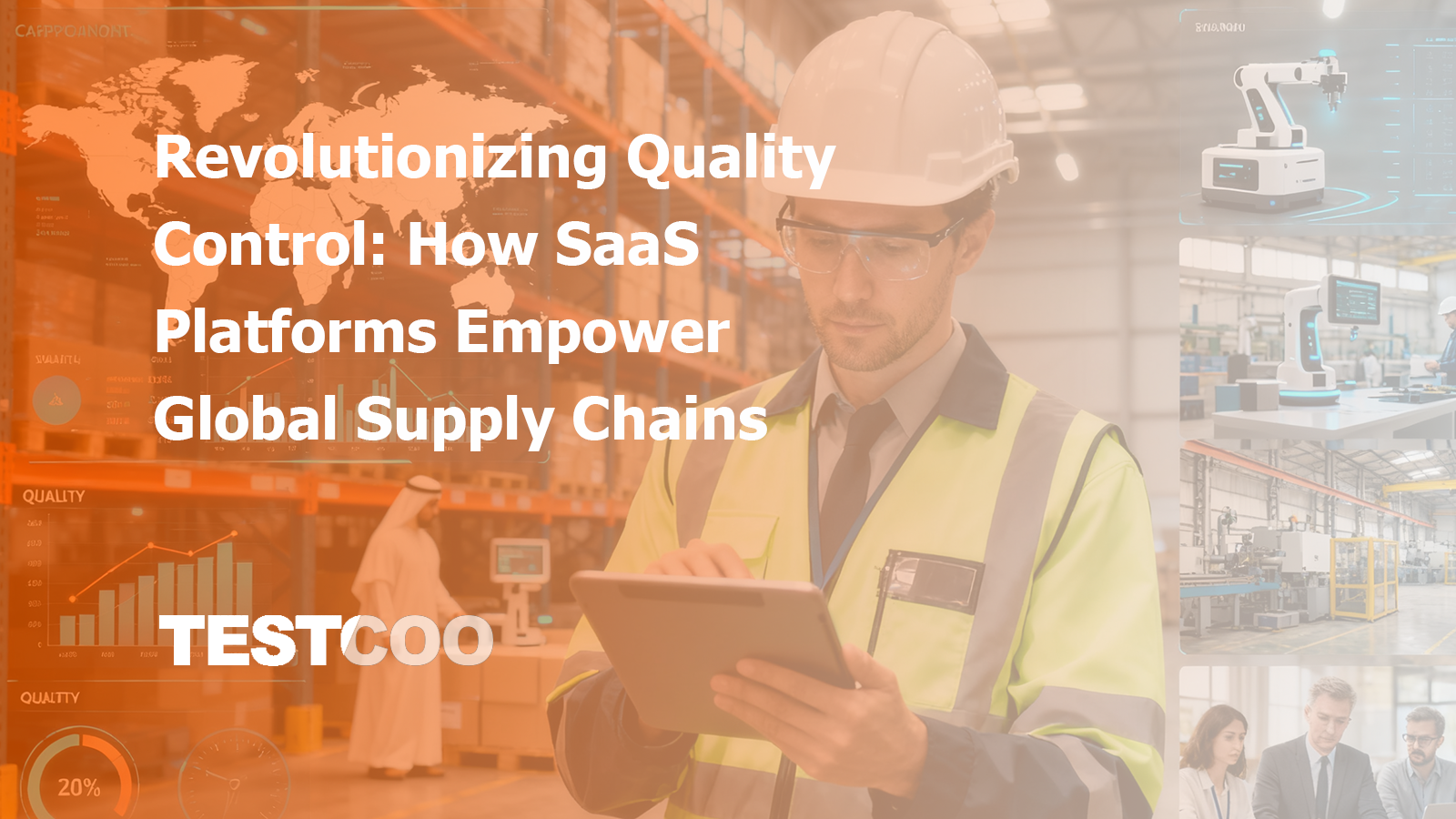
Modern Quality Control SaaS platforms have been introduced. Designed for the cloud-connected world, these tools provide real-time visibility, centralized data, global standardization and intelligent analytics to the frontline of manufacturing and inspection. For brands, exporters and importers alike, adopting an SaaS-powered QC system is not just a technological upgrade; it is a strategic step toward resilient, transparent and efficient supply chains.
Why Traditional Quality Control Falls Short
Despite decades of advances in manufacturing automation (from robotic assembly lines to 3D printing) and logistics technology (such as real-time shipment tracking), research shows that over half of manufacturers rely on manual or semi-manual QC processes, according to reports on the automotive, food & beverage and overall manufacturing industriest. These legacy systems often look like this: an inspector at a factory in Vietnam fills out a paper checklist for a batch of textiles, takes photos with a personal phone and emails a scanned PDF report to a brand’s headquarters in Germany. The brand’s QC team then manually enters key data into an Excel spreadsheet, which is shared via email with the sourcing team creating a chain of delays, errors and disconnected information. Factory audits are typically conducted once per quarter by third-party firms, with follow-up actions tracked via disjointed email threads rather than a centralized system.
These outdated methods create critical pain points that ripple across the entire supply chain:
- High labor and coordination costs: Manual documentation requires inspectors to spend 2–3 extra hours per day transcribing data from paper to digital formats, while brands often hire dedicated teams to reconcile conflicting spreadsheets from different suppliers. A 2023 study by McKinsey found that manual QC processes add an average of 15–20% to the total supply chain labor costs which could be eliminated with automation.
- Limited visibility across sites: When a brand sources from over 20 suppliers across five countries, collating inspection results becomes a logistical nightmare.
- Delayed decision-making: Traditional QC often operates on a “post-production” timeline; defects are detected only after goods have been manufactured, packed or even shipped.
- Inconsistent standards: Without a centralized protocol, inspection criteria can vary significantly between factories or even between inspectors.
- Data silos: Quality metrics (such as defect rates, audit scores and supplier performance) are often stored in separate systems, such as Excel spreadsheets, email inboxes, factory databases or third-party audit reports. This makes it impossible to spot long-term trends, such as a supplier whose defect rate has increased by 10% over 6 months or to identify root causes.
For global brands, these shortcomings are not just operational headaches, they are business risks. The cost of a single defective batch can include not only rework or returns but also regulatory fines (e.g.for non-compliance with EU REACH standards), lost sales, and permanent damage to brand reputation. A 2024 Consumer Reports survey found that 62% of consumers would stop buying from a brand after just one incident of poor product quality, making robust QC no longer a “nice-to-have,” but a strategic necessity.
Read More:Product Inspection Checklist for Quality Control | Testcoo
How Is SaaS Transforming Quality Management?
Against this backdrop, Quality Control SaaS has emerged as a transformative solution, one that addresses the core flaws of traditional QC by leveraging cloud technology, real-time collaboration and data integration. Unlike on-premise software (which requires expensive hardware, IT teams to maintain and often cannot be accessed outside of headquarters), QC SaaS platforms are hosted in the cloud, meaning they can be accessed from anywhere with an internet connection whether that is a factory floor in India, a brand office in Canada or a third-party inspector’s tablet in Brazil.
The adoption of QC SaaS is accelerating rapidly: The global quality management software market size was estimated at USD 11.14 billion in 2024 and is projected to reach USD 20.66 billion by 2030, growing at a CAGR of 10.6 % from 2025–2030. This growth is driven by the unique value of SaaS in supply chains: it transforms QC from a reactive, siloed process into a proactive, collaborative one.
Key features of modern QC SaaS platforms, designed specifically for the needs of global supply chains, include:
- Real-time inspection booking, tracking and report access: Suppliers can schedule inspections directly through the platform, and brands can track the status of every inspection (e.g.“scheduled,” “in progress,” “completed”) in real time. Once an inspection is completed, reports are uploaded instantly—no more waiting for emails or scanned PDFs. For example, a beauty brand using a QC SaaS platform reduced the time required to access inspection reports from 48 hours to 15 minutes.
- Unified checklists and audit workflows: Brands can create standardized checklists (tailored to product categories, such as cosmetics or electronics) and push them to all factories. These checklists are digital, interactive, and include photos or videos to clarify the criteria (e.g.“what constitutes a ‘critical’ packaging defect”). Audits also follow a centralized workflow: audit plans are shared in advance, findings are logged on the platform, and follow-up actions are assigned with due dates, ensuring that no step is missed.
- Customizable analytics dashboards: SaaS platforms turn raw QC data into actionable insights with dashboards that display key metrics, such as defect rates by product/supplier/country, supplier performance scores, and risk indicators (e.g.“suppliers with 3+ critical defects in the last month”). These dashboards are customizable, so a sourcing manager can focus on supplier performance, while a QC director can track global defect trends.
- Mobile/tablet access for on-site inspectors: Most QC SaaS platforms offer mobile apps that allow inspectors to log their findings directly on the factory floor. Inspectors can take photos/videos of defects, tag them by category (e.g.“material defect,” “assembly error”), and submit reports instantly, eliminating manual data entry and reducing errors.
- Automated alerts and notifications: Platforms can be set up to trigger alerts when predefined thresholds are breached—for example, “defect rate exceeds 5%” or “inspection is delayed by 24 hours.” These alerts are sent to relevant stakeholders (e.g.sourcing managers, supplier contacts) via email or in-app notifications, ensuring issues are addressed quickly. A food brand using this feature reduced the time required to resolve quality issues from 7 days to 2 days.
- Seamless integration with existing systems: Top QC SaaS platforms integrate with other supply chain tools, such as Enterprise Resource Planning (ERP) systems, Product Lifecycle Management (PLM) software (e.g.Siemens Teamcenter), and supplier portals. This means that data flows automatically between systems; for example, when a production order is created in the ERP, the SaaS platform can auto-generate an inspection request, eliminating duplicate data entry and ensuring consistency.
These features transform QC from a “check-the-box” activity into a strategic function that drives efficiency, reduces risk, and strengthens supplier relationship. For brands operating in global markets, this is a game changer: it allows them to maintain consistent quality across geographies, respond quickly to issues, and scale their supply chains without sacrificing control.
Related Article: Software As A Service Market Size & Share Analysis
Frequently Asked Questions (FAQs)
1. What is a SaaS platform for quality control?
A SaaS platform for quality control is a cloud-based solution that allows manufacturers, importers, and inspection teams to manage product quality in real time. It replaces manual reporting and spreadsheets with centralized data, digital checklists, and live collaboration tools accessible from anywhere.
2. How does a QC SaaS platform improve supply chain efficiency?
By integrating all quality data, such as inspection results, supplier performance, and audit reports—into one system, a QC SaaS platform eliminates duplication, reduces human error, and speeds up decision-making across different regions and departments.
3. What are the main advantages of using SaaS for global quality management?
Key benefits include real-time visibility, improved communication between buyers and suppliers, standardized inspection processes, automated reporting, and cost savings through reduced rework and delays.
4. Is a SaaS-based system secure for managing sensitive supplier data?
Yes. Reputable QC SaaS platforms use enterprise-level encryption, access control, and data backup measures to protect all information shared within the system. Most providers also comply with international data security standards such as ISO/IEC 27001.
5. How is SaaS different from traditional on-premise quality software?
Unlike on-premise software that requires installation, maintenance, and internal servers, SaaS operates in the cloud. This means updates, scalability, and data access are automatic and available from any device with an internet connection.
6. Who can benefit from a QC SaaS platform?
Manufacturers, importers, sourcing agents, and third-party inspection companies all benefit from QC SaaS. It provides centralized control over production quality, enhances traceability, and supports compliance with global standards.
How SaaS Platforms Empower Global Supply Chains
The value of QC SaaS extends far beyond digitizing checklists; it fundamentally changes how global supply chains operate by addressing the unique challenges of cross-border sourcing. The following are five key ways in which SaaS platforms empower supply chains:
1. Real-time Visibility and Tracking
In a global supply chain, “visibility” means knowing exactly what is happening with productsat every stage and in every location. Traditional QC offers almost no real-time visibility; brands often have to wait days to find out if a factory’s inspection passed or failed and by then, problems may have escalated.
QC SaaS solves this problem by providing a single, live view of all QC activities. For example:
- A sports apparel brand sourcing from 15 factories in Asia can log into its SaaS platform and see that an inspection at a Vietnamese factory is “in progress,” with 3 minor defects already logged.
- A sourcing manager in the U.S. can instantly view photos of defects rather than waiting for an email.
- If the defect rate exceeds a set threshold (e.g.8%), the platform triggers an alert, allowing the manager to contact the factory immediately before the entire batch is manufactured.
This real-time visibility minimizes delays by identifying issues early. A 2024 study by the International Supply Chain Education Alliance (ISCEA) found that brands using QC SaaS reduced shipment delays caused by quality issues by 38%because they could address defects during production, not after. It also reduces rework costs: by fixing issues before goods are packed or shipped, brands avoid the expense of returning or reworking the finished products.
2. Standardisation Across Regions
One of the biggest challenges of global sourcing is to maintain consistent quality standards across diverse markets. An “acceptable” defect in one country may be “unacceptable” in another and without standardization, product quality becomes unpredictable.
Inspection reports are submitted in a standardized format; therefore, a QC manager in the EU can quickly understand a report from a factory in Brazil, no more translating inconsistent spreadsheets or interpreting vague descriptions.
This standardization reduces variability in product quality. A household goods brand reported that after implementing a QC SaaS platform, the variation in defect rates between its 12 global factories dropped from 18% to 5%, leading to fewer customer complaints and more consistent retail feedback. It also simplifies compliance; brands can easily demonstrate to regulators that all factories follow the same standards, reducing the risk of fines or product recalls.
3. Data-Driven Decision Making
Traditional QC relies heavily on qualitative data subjective reports like “factory A has ‘good’ quality” or “batch B had ‘some’ defects.” This makes it difficult to make informed decisions regarding suppliers, product designs or sourcing strategies.
QC SaaS converts qualitative data into quantitative insights by aggregating and analyzing millions of data points.
- An electronics brand can use its SaaS platform to compare defect rates across five suppliers: Supplier X has a 4% defect rate for circuit boards, while Supplier Y has a 12% rate making it easy to decide which supplier to prioritize for future orders.
- The platform can track defect categories over time: “battery leakage” was the top defect in Q1, but after the brand worked with the supplier to upgrade machinery, it dropped to the 5th most common defect in Q2.
- The platform can also identify root causes: a recurring “screen scratch” defect is traced to a specific packaging machine at a factory in Thailand allowing the brand to recommend a fix.
These data insights transform the way brands manage their supply chains. Instead of making decisions based on guesswork or anecdotal evidence, they can rely on data. A 2024 survey by Deloitte found that brands using data-driven QC were 2.5 times more likely to improve supplier performance and 3x more likely to reduce quality-related costs than those using traditional methods.
Read more: How to Prevent Garment Defects in Apparel and Textile Industry
4. Collaboration and Transparency
Global supply chains involve dozens of stakeholders, including brands, suppliers, third-party inspection firms, logistics providers and retailers. Traditional QC often creates friction between these groups as information is shared haphazardly (via email, phone calls or spreadsheets) and there’s no clear audit trail of who did what, when.
QC SaaS solves this problem by creating a collaborative and transparent environment in which all stakeholders have access to the same information.
- Suppliers can log into the platform to view an inspection report, see which defects were flagged and respond with a corrective action plan.
- A third-party inspector can upload photos of defects, tag the relevant supplier contact, and assign a follow-up task to ensure that the supplier is immediately aware of the issue.
- The retailer can access the platform to view inspection reports for the products it orders giving them confidence that the goods meet their quality standards.
This transparency builds trust among stakeholders. A supplier survey by the Global Sourcing Association found that 79% of suppliers felt more valued by brands using QC SaaS because they had clear visibility into quality expectations and could address issues proactively. It also reduces disputes; if a brand and supplier disagree about a defect, they can refer to the platform’s audit trail (photos, checklists, timestamps) to resolve the issue quickly.
5. Scalability and Cost Efficiency
As brands grow, their supply chains grow with them, adding more factories, product categories and markets. Traditional QC struggles to scale: adding a new factory means hiring more QC staff, setting up new spreadsheets and training the factory on new processes, all of which are time-consuming and expensive.
The QC SaaS is designed for scalability. Because it is cloud-based, there is no need to invest in new hardware or IT infrastructure when adding a new factory.
- A fashion brand that expands from three factories to 15 can simply add the new factories to its SaaS platform, no additional software licenses or IT setup required.
- The platform’s checklists can be easily updated for new product categories and pushed to all factories in minutes.
- During seasonal peaks (e.g.holiday shopping), the platform can handle a 200% increase in inspections without slowing down, unlike on-premise software,which may crash under heavy load.
This scalability also drives cost efficiency. Brands using QC SaaS avoid the upfront costs associated with on-premise software. For exporters and brands launching new products, this flexibility is especially valuable because they can test new suppliers or product lines without committing to expensive software investments.
Raleted ArticleSAAS will reshape supply chain and logistics
Why Choose Testcoo to Lead Your SaaS Quality Transformation?
Quality control has moved far beyond the occasional factory inspection. In a world of global sourcing, speed, compliance, and consistency matter more than ever. SaaS platforms offer the tools to meet these demands, and when paired with trusted service partners like Testcoo, the result is powerful: a supply chain that is visible, accountable and agile.
If you are ready to transform inspection from a cost burden into a strategic advantage, discover how Testcoo’s SaaS platform and inspection services can help your business streamline quality management and boost global competitiveness.
Contact Testcoo today and book your demo of our digital QC solution
Free Sample Report Performance Quality Control
Download a sample report to keep control of your supply chain!
Featured Articles
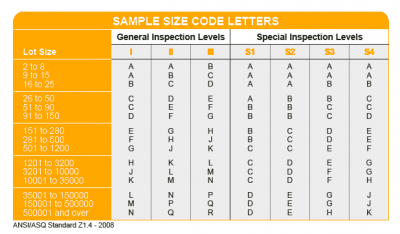 AQL Table | How to Read It
AQL Table | How to Read It TOP 10 Common Defects in Garments Quality Inspection
TOP 10 Common Defects in Garments Quality Inspection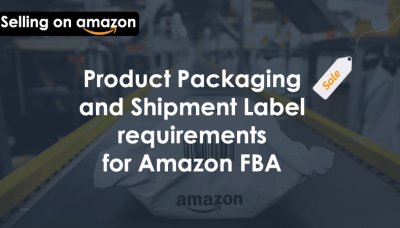 Product Packaging and Shipment Label requirements for Amazon FBA
Product Packaging and Shipment Label requirements for Amazon FBA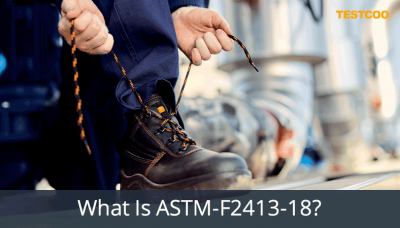 What Is ASTM-F2413-18? Protective Footwear Standard
What Is ASTM-F2413-18? Protective Footwear Standard How to Conduct Third-Party Quality Control Inspections for Electric Scooters
How to Conduct Third-Party Quality Control Inspections for Electric Scooters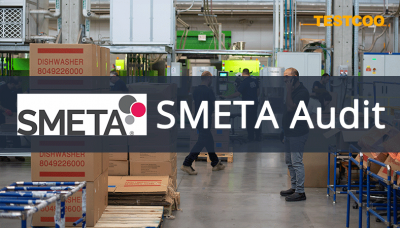 SMETA Audit-What is SMETA Audit?
SMETA Audit-What is SMETA Audit? TESTCOO Supplier Verification/Certification Service SLCP, Higg FEM, GRS, GOTS
TESTCOO Supplier Verification/Certification Service SLCP, Higg FEM, GRS, GOTS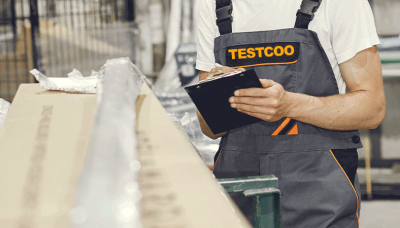 Quality Control Inspection Company in China
Quality Control Inspection Company in China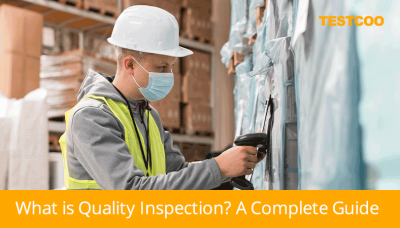 What is Quality Inspection? A Complete Guide
What is Quality Inspection? A Complete Guide Guidelines for Product Inspection in India
Guidelines for Product Inspection in India
Category
- Production Inspection Service
- Factory Audit
- Softline Inspection
- Hardline Inspection
- Electrics Inspection
- Certification
- Checklist
- Manufacturers
- Quality Assurance Basics
- Products Recall
- AQL
- Guidence and Standard
- News
- Supplier Management
- Amazon
- Protective Equipment
- e-commerce quality control
- Indian Manufacturing
- Soft Goods Quality Control
- Supply Chain Management
- Supply Chain Resilience
- E-Commerce Quality Control
- ISO 2859
- Supply Chain Optimization
- Garment Industry
- Higg Index




